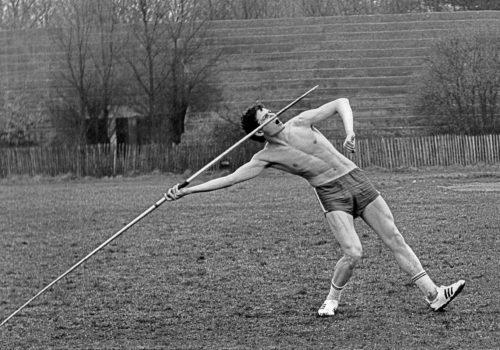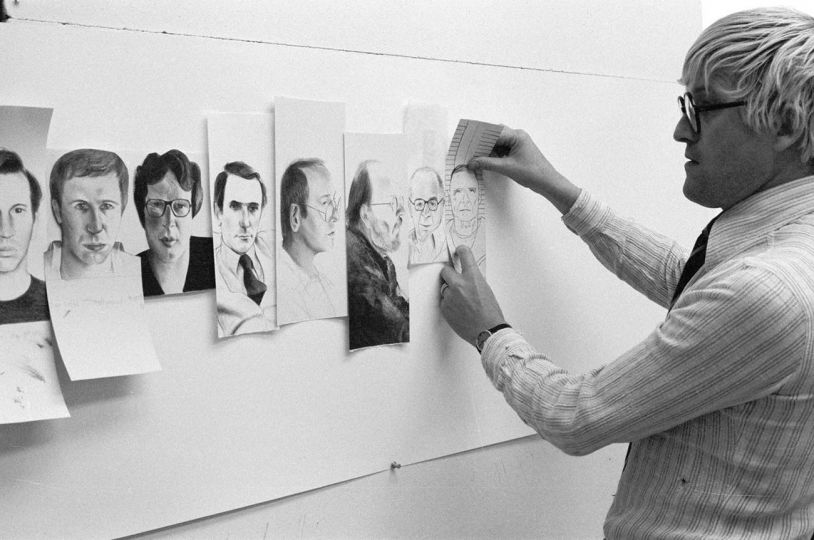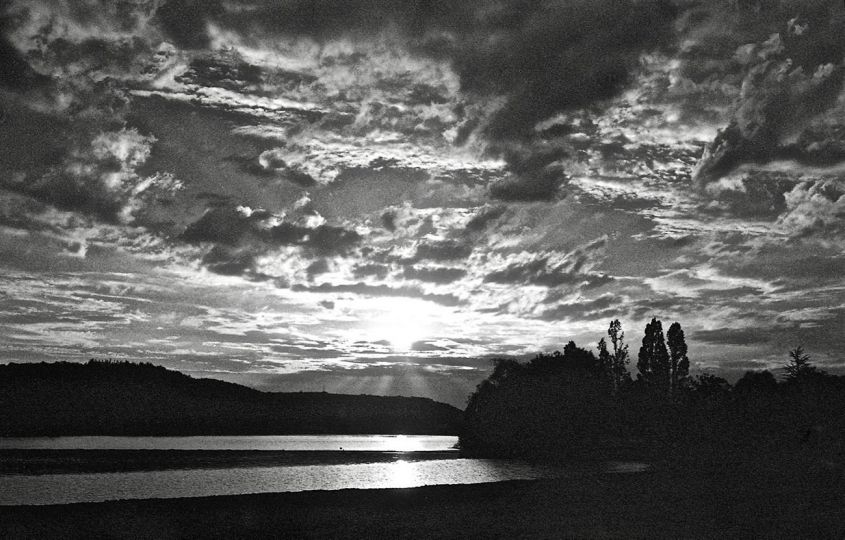Thierry Maindrault’s Monthly Chronicle
Does it come from elsewhere or from nowhere? How many thousands of questions for this little latest image arrival in our environment?
For some time now, not a day has gone by without a number of media coming to explain to us the immense merits of artificial intelligence [AI, for short]. As a preamble, I will repeat myself once again, artificial intelligence still does not exist and once again, the words are used indiscriminately. It follows that in reality, it is human intelligence that is perverted. These beautiful tools that we have imagined and implemented are only digital concept and strictly nothing else. Let’s stop cooing with pointless high-sounding terms. All of these tools, so badly dubbed, only work through binary-only choices and storage. It’s zero or one, so it’s yes or no, it’s white or black. The actions of the tool being constructed from a succession of switches.
This essential point being, I hope, understandable by all. So what is digital concept doing in the world of photography? The daily news of these last days suggest that the photographic tools will be destroyed by those of the digital development. I do not wish to argue about the merits or the horror of digital assistance for the creation of an image. I prefer, in a few strokes (the subject is so vast), to open everyone’s mind to the various impacts that have appeared or are to be born in our societies and in our cultures.
Technology
The current and integral realizations of images by digital concept are built from image data storage in digital format (series of 0s and 1s) and a row of binary switches. Using many thousands of lines of code, a software reconstructs an image according to more or less numerous and precise parameters which will limit the number of usable switches and will determine the data to be taken from the stocks. However, it must not escape us that the information chosen to constitute the image and the way in which it will be assembled depend on lines of code written by a programmer. For two identical requests, modifying a single line of software code will categorically change the result obtained of the image.
Structure
In the end result, who controls what? Such is the question which invites itself in the diagram which leads to the finalized image. The journey is long, it begins with a subject fixed by light in the form of a picture transformed by digitalization to be stored. This first storage must be shared (or at least accessible) on digital transfer networks. A software will then search and draw from as much digital storage as possible (in data centers) to choose the images that seem to be the most in line with the customer’s request. After recovering the – a priori – relevant files, it will grind them in all directions to build a new digital file that it will have to transfer permanently or precariously to the initial requester. The modification of a single elementary and basic operation in this procedure can completely change the face of the image obtained, failing to change the face of the World. The manipulation of the masses is found in the fingers, on hold, above a computer keyboard or behind the lips in front of a voice recognition microphone.
Legality
From the moment when the path to obtaining this new type of image became complex, the apostles of Law became interested in the multiple legal consequences in our societies. Since the creation is legally recognized as property (already multi-faceted), the question arises as to where could we find the creation in the latest version of the image that excites the blissful crowds so much. Do the actual authors are the subjects or the objects who posed initially, the photographers (or painters, graphic designers, etc.) who took the shot or the representation, the computer developer who built and wrote the determining software for the result, the kid who filled in the boxes of the parameters, on his screen, at the origin of the final image? The legal answers are not for tomorrow, based on the questions still pending about the reuse or modification of an original photograph. Where will the limits of the many properties related to creation begin, and where will they end? Whether moral, intellectual, financial, commercial, about reproduction, distribution, etc., how will the original rights of creators be settled in this new landscape? What about the treatment of manipulations and truths revealed in totally falsified images? How to punish the perpetrators of shattered lives when they have not been knowingly or stupidly stolen? Too bad, the minds of lawyers no longer work at the same speed as those of a few computer virtuosos. Anticipation – however vital – is no longer part of the skills of those who do and those who apply the Law.
Finance
The current Western world, globalized, revolves around this money, which is no longer a vector of exchange but has become a support for self-image. It is quite obvious that it is impossible to build such machinery without means, and therefore without resources. As one should never be too careful, the income will not be collected for the fabulous anedoctical results obtained, whose acquisition – not snob – remains random. It was wisely decided to take the tithes into the circuit. In photography, we are familiar with this system that has been in place for a few years. The gain of money is no longer made by the author on the sale of his artworks. The financial receipts are realized by all the intermediaries (galleries and bogus publishers, marvelous virtual laboratories, website upholsterers, pseudo artistic agents, sellers of materials, etc.) who all take some pennies, when they do not ransom, a lot of “gogos”. You know well all these brave people to whom they made believe that with their latest smartphone, they are brilliant artists in need of a future. This practice, well established, applies perfectly to the digital production of an image, with each of your attempt a part of your heritage falls into various pockets well-placed inside the circuit.
Psychology
The digital concept undeniably brings a certain comfort to each of us by effectively relieving physical or intellectual constraints. What few people see coming are the perverse effects – very real – that this engenders, both individually and collectively. Repetitive, but sometimes vital, tasks fade in our lives only to quickly disappear over a generation. A form of physical idleness sets in and drives out regenerative biological activity. If we add the cerebral evaporation of know-how, even the most elementary, such as counting or memorizing for example, we find that knowledge in its composition and in its use disappears in the mists of communication. Slowly the Human disappears from the economic and social field, the creative compensation is in competition with the artificial paradises. If the individual no longer finds himself in the place he has assigned to himself or that he has accepted, depression sets in with a quick : “I become useless”. It is true that by cutting into the fields of curiosity, of reflection, of contestation; the digital concept (more precisely those who master it) inexorably enslaves our own intelligence.
Philosophy
You understood me, all these remarks are only “grain to grind” to allow us to reflect on our future and that of those to whom we must pass the torch. Once again, our photographic universe is one of the symptomatic beacons of the evolution of our species. Today, a brand known to all is going to award a prestigious photography prize to an image that has nothing to do with photography. This award-winning image is a pure digital assembly of information picked from this jungle of formless collective memory. This well-known name in the photographic world (among others) was informed of the thing without questioning it. This world photography prize delivered by it, and its commercial importance, are certainly more important than the lie which consists in making believe that the image is a photograph. Which is fundamentally wrong. The political, economic, media and scientific worlds begin to be scared when they see this new film of the sorcerer’s apprentice. Some ask for an immediate freeze-frame, but their reflection is already no longer in the timing of the digital concept. I personally wonder what it could be if we were already in the era (because it will indeed be a new era for Humanity) of true artificial intelligence.
In summary to these various approaches, the use of digital concept has become essential to improve the use and operation of all the tools imagined or to be imagined by Man. Any questioning can only be utopian, just like imagining this new tool making decisions not programmed by a man. The vast world of photography, that of all the technologies and all the uses of photography, has long been impacted by the automation, fixing, and restitution of images using light (etching by waves bright). Should we, however, suggest that an image resulting from a conglomeration of information from anywhere is a photographic work? Objectively, this is not the case. But here is perhaps no reason to banish, for all that, the results of this improvement of the old artistic collages. Let’s not forget that when it was born, photographic technology was – like any innovation – very controversial. With a little time, the digital concept will certainly improve and be refine in all areas, the real photography will remain at the forefront. Is that a reason for it to be ousted by an astronomical series of digital bits? No more than the current human intelligence must find itself deprived by the same process.
When our inventors can replace binary choice with multi-spatial interactions, it will really be something else. But, it will also be another Story for another World.
Thierry Maindrault, April 14, 2023
your comments about this chronicle and its photography are always welcome at
















